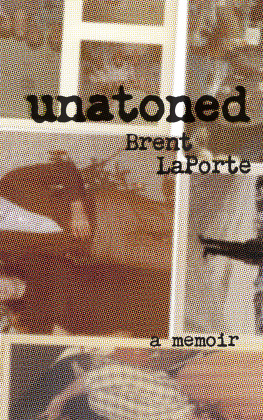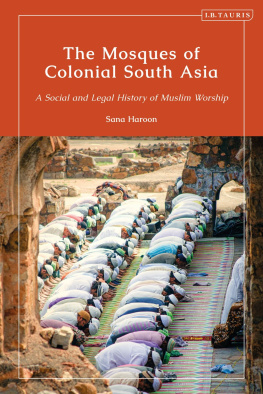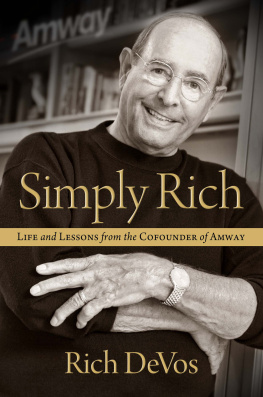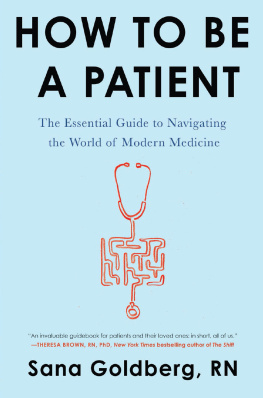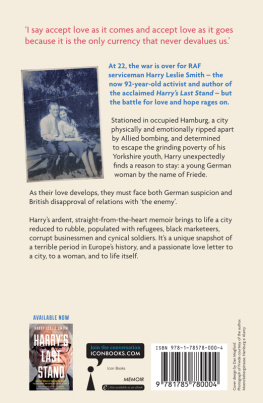Table of Contents
Guide
FIRST OFF, I WANT TO THANK DOUG SEIBOLD FOR HAVING confidence in this book. The personal time he committed to this project and the support he has given me during the years Ive taken to write it have been reassuring.
Though I could not have visualized it at the time, a book given to me by a man named Emmanuel Williams shifted my reading toward matters of an inner nature and became the true starting point for my memoir. I began writing my own book in earnest after a suggestion from Tom Powell, who at the time was the president of Mount St. Marys University in Emmitsburg, Maryland, my alma mater. This wasnt the first time someone suggested that I pen my story, but my business had recently closed, so I was stripped of my long-standing excuse for not pursuing the effort. During the writing stage, Mark Boss, a friend of more than 25 years, expressed the importance of vulnerability if I truly wanted to share my story. The conventional wisdom is that people, men especially, would be wise to hide their faults and problems, even from those close to them. Mark, on the other hand, advocated a different viewpoint, and Im forever grateful for his insight.
Throughout the entire process of creating this book, my wife has given me unwavering support, in spite of, at times, challenging circumstances. I must also acknowledge the support of Charlotte Reid, one of the best people Ive ever come to know. Her experience and foresight have had an indelible impact on this book. She also introduced me to stylist Michele Lopez and photographer Robert Shanklin, and Im very appreciative of their expertise.
There are a number of people I must acknowledge who have helped me to this point in my life: the Artis family, Greg and Beverly Mosso, Don Brooks, Benjamin Bummy Morrow, Looby Butch Chance, Willie Houser, Brenda McCutcheon, Anthony Tonyson Carter, Raymond Underdue, Raymond Singleton, Keith Kubweza Johnson, Kwabena Lumumba (Brother Eric), Gilbert Davidson, Joel Dias Porter, aka DJ Renegade, Brian Gilmore, Patrick Carter, and Mary Cox.
Finally, I want to note all of the children who have come into my life, including Jimmie Johnson III, Jasmin Hicks, Ashley Morrow, and Amika Underdue.
MY MOTHER NEVER TOLD ME ANYTHING ABOUT HER pastnot one thing! This may be hard to believe, but she talked to herself more than she ever actually spoke to me. I grew accustomed to this at home, but as I got older, I became keenly aware that her habit of engaging in intense conversations with herself was not ordinary behavior.
My aunt and uncles, who only saw us from time to time, knew something was wrong, too, but they never spoke about it, at least not to me, and their attempts to reach out to my mom were often rebuffed. My mom, being very stubborn, was generally unwilling to allow people into our lives. Including family.
It wasnt until after my moms death that her past began filtering its way to me, primarily from four sources. Her King James Bible, I discovered, had a list of family names and birthdates. She also kept documents and photos in an old, sky-blue Hawthorne suitcase. Despite the reluctance of many in my family, my constant questioning over the years gradually netted me some details about my mothers life. And finally, Lucille Hester, a friend of my mothers, shared whatever details she could recall whenever we saw each other in later years.
Lula Arzie Mae Artis, I learned, was born in Wayne County, North Carolina on January 25, 1932. Her dislike of the name Lula was so strong that she scribbled over it on her high school and college diplomas. She was the second youngest of ten children, and the youngest of three girls born to John Henry and Hattie Thompson Artis.
The Artis family faced two tragedies around the time of Arzie Maes birth. Her sister, Inez, was burned to death in an accidental fire before Arzie Mae was born. It was said that Inez was so bright that shed begun teaching one of her older brothers how to read. Then, when Arzie Mae was four, her mother died from complications during the birth of her eleventh child, who also died. John Henry, who was a farmer, later remarried a woman named Lucretia, and she treated his children as her own.
Arzie Mae was petite and brown-skinned, with thick, long, dark hair and a face that, as a college student, garnered her a prominent seat in the schools convertible during the homecoming parade. As a little girl, she and two of her cousins would sometimes venture over to the neighborhood market to perform outside. She did the singing while her cousins invited passersby to watch for a small fee. Arzie Mae had a beautiful voice, and her favorite song was the Lords Prayer.
Whether it was due to the pain from her mothers death, or some other reason, Arzie Mae was not a happy person. Much of her anger was directed at her oldest sister, Irene. She also had problems getting along with other girls, and, in her adult years, she developed a reputation, especially among the women in the family, for being mean.
Arzie Mae excelled in school, however. She graduated from Friendship High School in 1951 with honors and delivered a speech at the commencement ceremony. At North Carolina A&T in Greensboro, she continued to excel in her studies while joining the Alpha Kappa Alpha sorority. She graduated with a bachelors degree in home economics in 1955.
She earned a high school teachers certificate in the nearby city of Raleigh in 1959. She also began a relationship with tall, dark-skinned Herman Sutton, who had also graduated from A&T. Sometime after they started dating, Herman was visiting the Artis family home when he blacked out and collapsed to the floor. John Henry came rushing into the room, but no one could figure out what had caused Herman to lose consciousness. A few years later, he had a short stay at the Cherry Hill Psychiatric Hospital in Goldsboro, North Carolina.
Some family members expressed concerns about Arzie Mae dating Herman. Despite this, she continued seeing him, and they married sometime in the early 60s. John Henry died shortly after, in 1963, and a few years later the marriage began to falter. When Herman was offered a position in Michigan, Arzie Mae refused to give up her teaching job to move with him, so they divorced.
Michigan may have been too far for Arzie Mae, but Washington, DC wasnt, apparently. She moved there in 1966 and got a job at Coolidge Senior High School as a home economics teacher, with an annual salary of $5,350. Her older brother Leroy and his wife, Mary, had moved to Riggs Park in the Northeast part of DC in the late 50s. Her cousin Wilbert was also married and living in the city, as was his brother Curtis.
Being the second-youngest sibling and the so-called baby girl of her family, Arzie Mae was always doted on by her brothers, Uncle Leroy perhaps most of all. He was a tough, sturdy-framed man, a veteran of WWII, and one of the best mechanics you could find. He took on a lot of family responsibilities, especially since John Henry was somewhat sickly. It was Leroys hard-earned money that paid for Arzie Maes tuition at A&T.
When Arzie Mae came to DC, she stayed with Uncle Leroy, Aunt Mary, and their two children. Belva, the oldest child, was forced to surrender her room to accommodate her aunt. Her only request was that Arzie Mae not smoke in her room, so that the smell wouldnt damage her beloved wardrobe. Though Arzie Mae agreed to these terms, she would simply close the door to Belvas room and smoke anyway. Aunt Mary and Belvas complaints were ignored by Uncle Leroy.
Before long, Arzie Mae moved into a two-bedroom bottom-floor unit in the Hawaiian Garden apartment complex in Fort Totten. She befriended a fellow teacher in the DC public school system, named Lucille Hester, who lived just a floor above her.
At the age of 35, Arzie Mae mysteriously turned up pregnant, and she attempted to keep it a secret. Even Ms. Hester, who became her close friend, didnt know about the pregnancy. Sticking to her plan of secrecy, Arzie Mae started inviting a guy from North Carolina, who had previously been unsuccessful in courting her, to come visit her in DC. The suitor was surprised but excited by the offer, and he began visiting Arzie Mae. During one of his trips, he became a bit suspicious and stopped by to see Aunt Mary, who somehow knew about the pregnancy. Once the suitor found out what Arzie Mae was keeping from him, he stopped seeing her.
Next page

